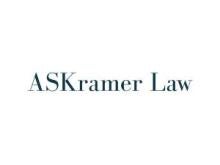Navigating the federal taxation of foreign currency can be compared to trying to cross a perilous sea. Both involve unexpected rough patches, serious difficulties, and frustrating complexity. In this Q&A, I provide an overview of the undertaking and specific details about the difficulties encountered. I provide advice as to ways to successfully reach a satisfactory outcome.
Foreign currency transactions can be entered into for personal, nonprofit, business, trading, and risk management purposes. While many areas of the tax laws are dense and similarly convoluted, the taxation of foreign currency is especially so. In this new five-part series, I offer a fresh perspective on this critical but confusing area of tax law.
Where in the Internal Revenue Code are the provisions applicable to foreign currency transactions and what exactly is their scope?
The Internal Revenue Code (Code) sets out rules addressing the amounts and timing of gains and losses on foreign currency transactions. Code sections 985 through 989 provide comprehensive rules on taxation of foreign currency transactions and transactions determined by reference to a foreign currency. In this Q&A, I focus on section 988 because it addresses the types of foreign exchange gains and losses most commonly incurred by U.S. taxpayers. Section 988 focuses principally on the character, timing, and source of foreign currency gains and losses. Although it clarifies some of the rules for the taxation of foreign currency transactions, it is silent or confusing on others.
How are “functional currency” and “foreign currency” defined for U.S. tax purposes?
For a U.S. taxpayer primarily conducting its activities in U.S. dollars, the U.S. dollar is that taxpayer’s “functional currency” as defined in section 985.[1] Any other currency is a “foreign currency” and is a “nonfunctional currency” in the taxpayer’s hands.
What are the rules for determining a U.S. taxpayer’s functional currency?
The Code provides rules for
-
Determination of the functional currency of a business;
-
Treatment of a business unit’s gains and losses from foreign currency transactions; and
-
Distribution of profits to a U.S. taxpayer from a foreign business unit and their conversion from foreign currency to U.S. dollars.
Tax law has borrowed the financial accounting concept of “functional currency”—requiring all income tax determinations to be made in a taxpayer's functional currency. A U.S. taxpayer’s functional currency is usually the U.S. dollar, except as provided in the Code and Treasury Regulations.[2]
Section 985 provides definitions of functional currency pertaining to a “qualified business unit” (QBU). A QBU is defined to mean “any separate and clearly identified unit of a trade or business of a taxpayer which maintains separate books and records.”[3] Its related tax treatment, the character of the transactions in which it engages, and its domicile are considered “according to all the facts and circumstances.” In the case of the QBU, the “functional currency” can be “the currency of the economic environment in which a significant part of such unit’s activities are conducted and which is used by such unit in keeping its books and records.”[4] While most of this series addresses taxation of foreign currency transactions for U.S. taxpayers directly, a taxpayer can have one, none, or several QBUs. Later in Part IV of this Q&A, Hedging Provisions & Section 1.988-5(a) Debt Hedges, I will consider certain rules that relate to QBUs.
Are foreign currencies “money” for U.S. tax purposes?
No. Only the U.S. dollar is “money” for U.S. tax purposes; all other currencies are treated as “property.” This means that whenever a U.S. taxpayer exchanges or disposes of a foreign currency, it must compute gain or loss on the related transaction.
Are gains or losses on the sale or exchange of foreign currency taxable?
Yes. Foreign currency gain or loss is taxed at its value in U.S. dollars. Because foreign currency is treated as property, a taxpayer reports gains (losses) if it makes a profit (loss) on exchanging one foreign currency for another foreign currency; buying something and paying for it in a foreign currency; or converting a foreign currency into U.S. dollars. To show the exchange rates used in calculating specific gains and losses, the taxpayer must keep detailed records.
How are foreign currency gains and losses taxed under section 988?
Forward contracts, certain futures, options, and foreign currency are used to purchase property from foreign sources, pay for services in a currency other than the U.S. dollar, and manage various business risks. Such transactions are referred to as “section 988 transactions” and they are taxed at ordinary income rates. My focus in this series will be on the rules that apply to section 988 transactions, which include physical (actual or spot) foreign currencies, as well as financial instruments denominated in or determined by reference to the values of one or more foreign currencies.
Are all foreign currency transactions section 988 transactions?
No. A transaction is only treated as a section 988 transaction when a U.S. taxpayer is entitled to receive (or is required to remit) a payment denominated in a foreign currency, or the amount is determined by reference to the value of one or more foreign currencies.[5] It does not require the payment to be made in a nonfunctional currency if its value is determined by reference to the value of one or more nonfunctional currencies.[6]
For example, a section 988 transaction includes a forward contract that is valued in Euros, even if the forward contract is settled in U.S. dollars. On the other hand, a forward contract is valued in U.S. dollars, but settled in Euros, it is not a section 988 transaction—because it is neither denominated in a foreign currency nor determined by reference to the value of a foreign currency.
Some foreign currency transactions that section 988 does not apply to include the following:
-
Equity investments, including, preferred stock (unless provided for in the Treasury Regulations);
-
Gains or losses on capital equipment, inventory, or real property carried in a taxpayer’s books and records in a nonfunctional currency; or
-
Virtual currencies and digital assets (as they are not the coin and paper money of the United States or another country, and they are not digitally issued by any government’s central bank).[7]
How does a taxpayer compute gain or loss on a section 988 transaction?
The amount of foreign currency exchange gain or loss realized from the sale or other disposition of a foreign currency is the difference between the amount the taxpayer realizes on its sale and the taxpayer’s adjusted tax basis (purchase price minus any costs associated with owning the foreign currency).[8] In general, exchange gain or loss is computed separately from the underlying transaction’s gain or loss.[9] A special rule applies to derivatives, however. Taxpayers do not separately compute exchange gain or loss from the rest of the gain or loss on a derivative transaction. Unlike other section 988 transactions, derivatives gain and loss is treated as exchange gain or loss at ordinary rates, so the total amount of gain or loss is treated as section 988 gain or loss.[10]
Gain or loss attributable to a section 988 transaction is treated as ordinary income or loss on the premise that exchange rate changes are primarily a function of interest rates (in the country of that currency).[11] To the extent provided in the Treasury Regulations, exchange gain or loss can be treated as interest.[12] Under certain circumstances, a taxpayer can elect to treat gain or loss from certain foreign currency forward contracts, futures, or option positions as capital gain or loss.[13]
[1] Code § 985(b).
[2] Code §§ 985 through 989.
[3] Code § 989(a) defines “qualified business unit” (QBU). Detailed discussion of QBUs is beyond the scope of this series.
[4] Code § 985(b)(1)(B)
[5] Code § 988(c)(1)(A); Treas. Reg. § 1.988-1(a)(1).
[6] Code § 988(c)(1)(A); Treas. Reg. § 1.988-1(a).
[7] IRS Notice 2014-21, 2014-16 I.R.B. 938, Q&A-2. See also, IRS, “Digital Assets,” https://www.irs.gov/businesses/small-businesses-self-employed/digital-assets “A digital asset is a digital representation of value recorded on a cryptographically secured distributed ledger or similar technology. If a particular asset has characteristics of a digital asset, it's treated as one for federal income tax purposes.”
[8] Treas. Reg. § 1.988-2(a)(2)(i).
[9] Code § 988(a)(1)(A); See also, H.R. 3838 (99th): The Tax Reform Act of 1986 (TRA ’86) Conf. Rep., supra note 1.a. at II-662.
[10] TRA ’86 Conf. Rep., supra note 2 at II-664.
[11] Senate Finance Comm. Report, S. Rep. No. 313, 99th Cong., 2d Sess. 452.
[12] Code § 988(a)(2). TRA ′86 Conf. Rep., supra note 3 at II-665.
[13] This election is addressed later in this series.




 />i
/>i
